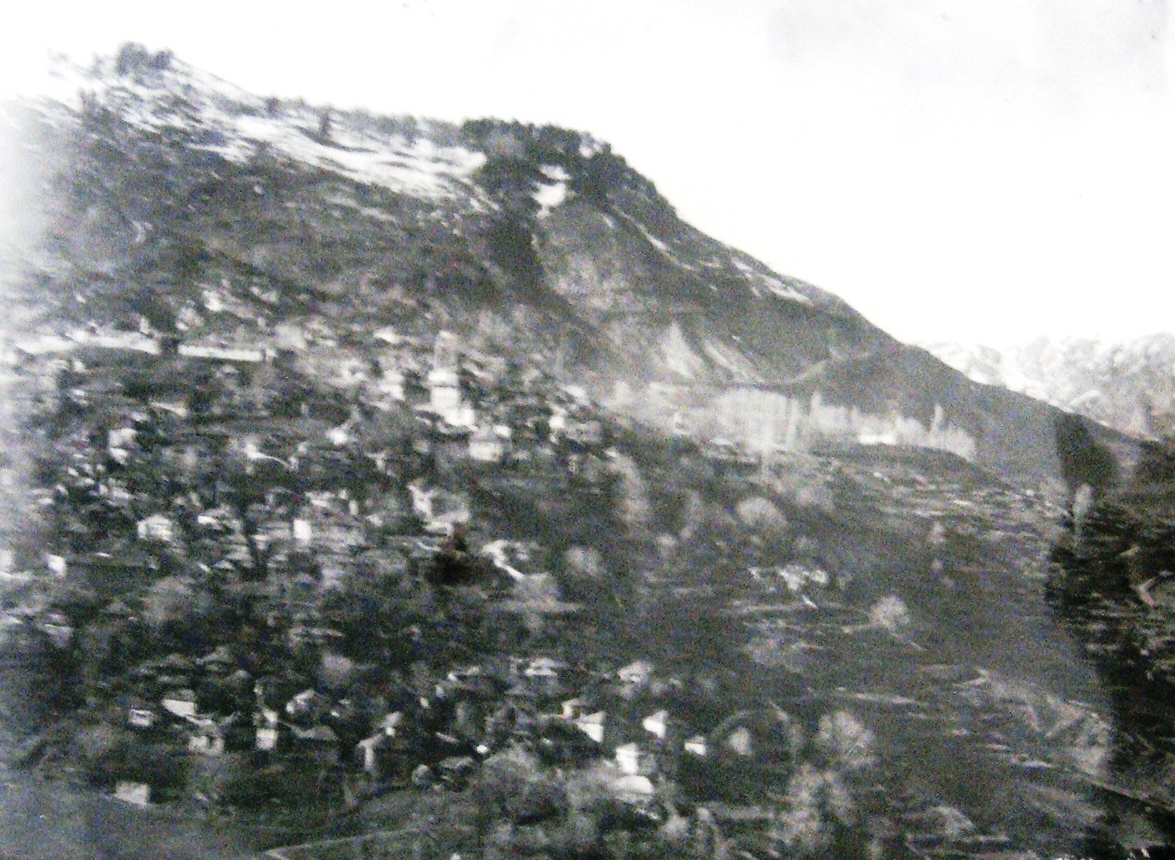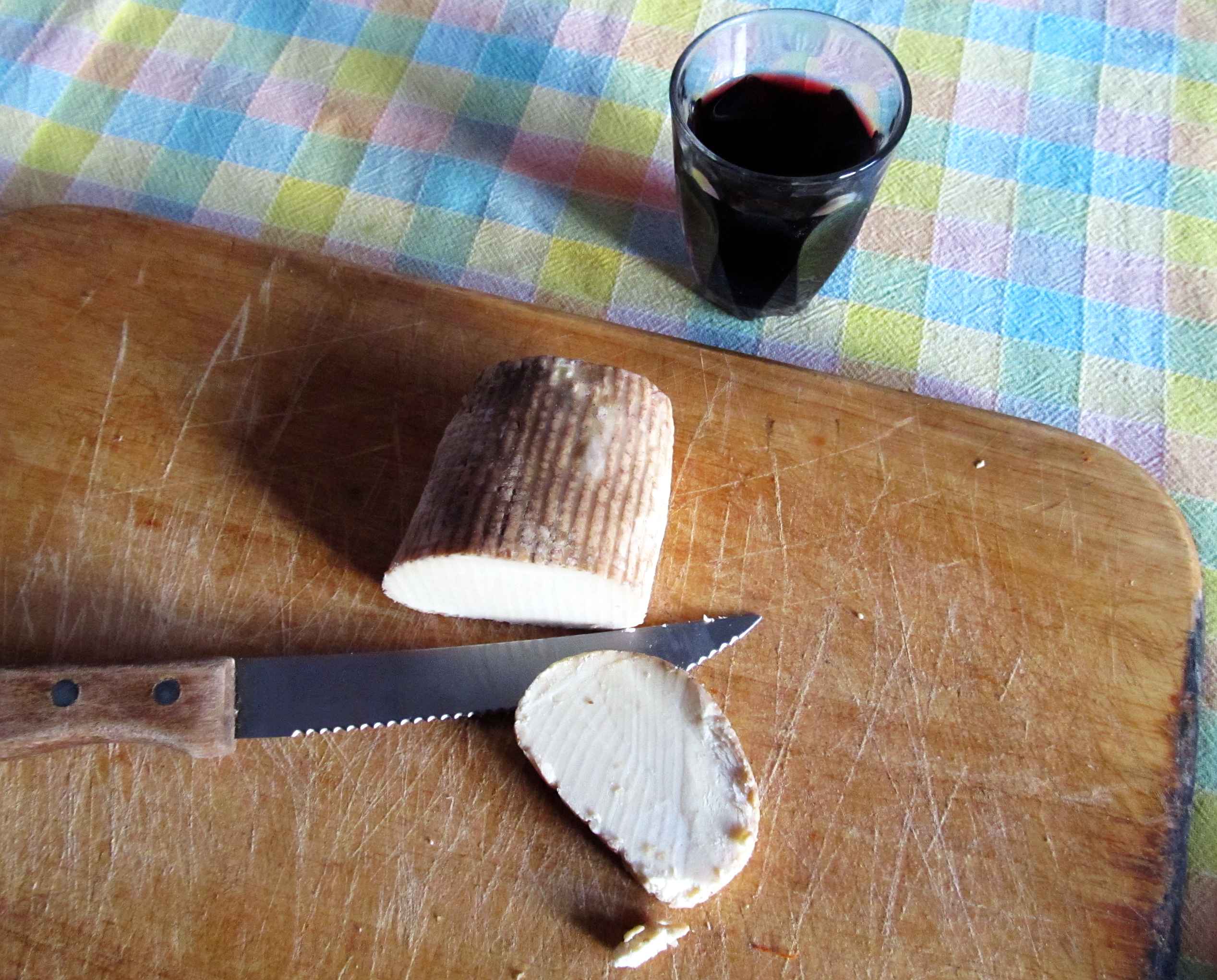|
Metsovone
Metsovone ( el, Μετσοβόνε) is a semi-hard smoked pasta filata cheese produced in the Aromanian village of Metsovo in Epirus, Greece. Metsovone has been a European protected designation of origin since 1996. This cheese, along with Metsovela, is one of the most popular culinary attractions of Metsovo. These cheeses are produced in the Tositsa Foundation Cheese Factory of Metsovo. Metsovone is manufactured from cow's milk or a mixture of cow and sheep or goat milk. See also * List of cheeses * List of smoked foods * Cuisine of Greece * Aromanian cuisine Aromanian cuisine ( rup, Cujina armãneascã) is the traditional cuisine of the Aromanians. The Aromanians are a small Balkan ethnic group scattered throughout the region, living in the countries of Albania, Bulgaria, Greece, North Macedonia, Ro ... * References {{Greek cheeses Metsovo Greek cheeses Aromanian cuisine Aromanians in Greece Smoked cheeses Cow's-milk cheeses Greek products with protected d ... [...More Info...] [...Related Items...] OR: [Wikipedia] [Google] [Baidu] |
Aromanian Cuisine
Aromanian cuisine ( rup, Cujina armãneascã) is the traditional cuisine of the Aromanians. The Aromanians are a small Balkan ethnic group scattered throughout the region, living in the countries of Albania, Bulgaria, Greece, North Macedonia, Romania and Serbia. Aromanian cuisine has been strongly influenced by Mediterranean and Middle Eastern cuisine. In Greece, the Aromanian village of Metsovo () stands out for the cheeses made there. The most popular cheeses from Metsovo are Metsovone and Metsovela, although other types of cheeses such as Graviera are also produced in Metsovo. Much of the cheeses coming from Metsovo are fabricated on the Tositsa Foundation Cheese Factory, operating since 1958. Aside from cheeses, some typical Metsovite dishes include meats such as kontosouvli and sausages, as well as pies with vegetables and mushrooms and bean soup, all of which can be accompanied with local wine. Outside of Metsovo, the Aromanian pie Batzina is popular in the area of Aspro ... [...More Info...] [...Related Items...] OR: [Wikipedia] [Google] [Baidu] |
Metsovo
Metsovo ( el, Μέτσοβο; rup, Aminciu) is a town in Epirus, in the mountains of Pindus in northern Greece, between Ioannina to the west and Meteora to the east. The largest centre of Aromanian (Vlach) life in Greece, Metsovo is a large regional hub for several small villages and settlements in the Pindus region, and it features many shops, schools, offices, services, museums, and galleries. The economy of Metsovo is dominated by agriculture and tourism, the latter of which flourishes in winter. Metsovo is served by Greek National Road 6 (Ioannina – Trikala) and by the Egnatia Odos motorway. Etymology From medieval times till well into the 19th century, Metsovo was known, in various sources, as ''Metzovo''. From the end of the 18th century on, the literary form of ''Messovon'' makes its appearance. The town is known as ''Aminciu'' in Aromanian (Vlach), and as ''Miçova'' in Ottoman Turkish. Ottoman census records In the Ottoman census records we see the word ''Mcwh'' ... [...More Info...] [...Related Items...] OR: [Wikipedia] [Google] [Baidu] |
Aromanians In Greece
The Aromanians in Greece ( rup, Armãnji tu Gãrtsii; el, Βλάχοι/Αρμάνοι στην Ελλάδα) are an Aromanian ethno-linguistic group native in Epirus, Thessaly and Western and Central Macedonia, in Greece. In the country, they are commonly known as "Vlachs" (Βλάχοι, Vláchoi) and referred to as "Vlachophone Greeks" or "Vlach-speaking Greeks", because most Aromanians in Greece have a Greek identity and identify themselves with the Greek nation and culture. Culture The Aromanians of Greece count with the Panhellenic Federation of Cultural Associations of Vlachs, a cultural organization of Aromanians. Music Cuisine List of settlements )'' * Delvinaki * Kefalovryso ''( rup, Migidei, Migidea)'' * Igoumenitsa * Paramythia'' ( rup, Pãrmãthia, Pãrmãthii)'' * Filiates * Arta * Vovousa ''( rup, Baiesa, Baiasa)'' * Smenos * Asproklisi * Anilio ''( rup, Nkiare, Chiarã)'' * Armata * Avdella ''( rup, Avdhella)'' * Distrato ''( rup, Briaza)'' * Doli ... [...More Info...] [...Related Items...] OR: [Wikipedia] [Google] [Baidu] |
Cuisine Of Greece
Greek cuisine (Greek: Ελληνική Κουζίνα) is the cuisine of Greece and the Greek diaspora. In common with many other cuisines of the Mediterranean, it is founded on the triad of wheat, olive oil, and wine. It uses vegetables, olive oil, grains, fish, and meat, including pork, poultry, veal and beef, lamb, rabbit, and goat. Other important ingredients include pasta (for example hilopites), cheeses, lemon juice, herbs, olives, and yogurt. Bread made of wheat is ubiquitous; other grains, notably barley, are also used, especially for paximathia. Common dessert ingredients include nuts, honey, fruits, and filo pastries. It continues traditions from Ancient Greek and Byzantine cuisine, while incorporating Balkan, Turkish and Italian influences. History Greek cuisine is part of the culture of Greece and is recorded in images and texts from ancient times. Its influence spread to ancient Rome and then throughout Europe and beyond. Ancient Greek cuisine was characteri ... [...More Info...] [...Related Items...] OR: [Wikipedia] [Google] [Baidu] |
Aromanians
The Aromanians ( rup, Armãnji, Rrãmãnji) are an Ethnic groups in Europe, ethnic group native to the southern Balkans who speak Aromanian language, Aromanian, an Eastern Romance language. They traditionally live in central and southern Albania, south-western Bulgaria, northern and central Greece and North Macedonia, and can currently be found in central and southern Albania, south-western Bulgaria, south-western North Macedonia, northern and central Greece, southern Serbia and south-eastern Romania (Northern Dobruja). An Aromanian diaspora living outside these places also exists. The Aromanians are known by several other names, such as "Vlachs" or "Macedo-Romanians" (sometimes used to also refer to the Megleno-Romanians). The term "Vlachs" is used in Greece and in other countries to refer to the Aromanians, with this term having been more widespread in the past to refer to all Romance-speaking peoples of the Balkan Peninsula and Carpathian Mountains region (Southeast Europe) ... [...More Info...] [...Related Items...] OR: [Wikipedia] [Google] [Baidu] |
List Of Smoked Foods
This is a list of smoked foods. Smoking is the process of flavoring, cooking, or preserving food by exposing it to smoke from burning or smoldering material, most often wood. Foods have been smoked by humans throughout history. Meats and fish are the most common smoked foods, though cheeses, vegetables, and ingredients used to make beverages such as whisky, smoked beer, and ''lapsang souchong'' tea are also smoked. Smoked beverages are also included in this list. Smoked foods Beverages * Lapsang souchong a kind of tea. * Mattha - an Indian buttermilk or yogurt drink that is sometimes smoked * Smoked beer – beer with a distinctive smoke flavor imparted by using malted barley dried over an open flame''Beer'', by Michael Jackson, published 1998, pp.150-151 ** Grätzer * Suanmeitang - a Chinese smoked plum drink * Scotch Whisky Some scotch is made from grains that have been smoked over a peat fire. File:JacksonsLapsangSouchong low.jpg, Lapsang souchong tea leaves. Lapsang sou ... [...More Info...] [...Related Items...] OR: [Wikipedia] [Google] [Baidu] |
List Of Cheeses
This is a list of cheeses by place of origin. Cheese is a milk-based food that is produced in wide-ranging flavors, textures, and forms. Hundreds of types of cheese from various countries are produced. Their styles, textures and flavors depend on the origin of the milk (including the animal's diet), whether they have been pasteurized, the butterfat content, the bacteria and mold, the processing, and aging. Herbs, spices, or wood smoke may be used as flavoring agents. The yellow to red color of many cheeses, such as Red Leicester, is normally formed from adding annatto. While most current varieties of cheese may be traced to a particular locale, or culture, within a single country, some have a more diffuse origin, and cannot be considered to have originated in a particular place, but are associated with a whole region, such as queso blanco in Latin America. Cheese is an ancient food whose origins predate recorded history. There is no conclusive evidence indicating where che ... [...More Info...] [...Related Items...] OR: [Wikipedia] [Google] [Baidu] |
Greece
Greece,, or , romanized: ', officially the Hellenic Republic, is a country in Southeast Europe. It is situated on the southern tip of the Balkans, and is located at the crossroads of Europe, Asia, and Africa. Greece shares land borders with Albania to the northwest, North Macedonia and Bulgaria to the north, and Turkey to the northeast. The Aegean Sea lies to the east of the Geography of Greece, mainland, the Ionian Sea to the west, and the Sea of Crete and the Mediterranean Sea to the south. Greece has the longest coastline on the Mediterranean Basin, featuring List of islands of Greece, thousands of islands. The country consists of nine Geographic regions of Greece, traditional geographic regions, and has a population of approximately 10.4 million. Athens is the nation's capital and List of cities and towns in Greece, largest city, followed by Thessaloniki and Patras. Greece is considered the cradle of Western culture, Western civilization, being the birthplace of Athenian ... [...More Info...] [...Related Items...] OR: [Wikipedia] [Google] [Baidu] |
Cow's-milk Cheeses
Milk is a white liquid food produced by the mammary glands of mammals. It is the primary source of nutrition for young mammals (including breastfed human infants) before they are able to digest solid food. Immune factors and immune-modulating components in milk contribute to milk immunity. Early-lactation milk, which is called colostrum, contains antibodies that strengthen the immune system, and thus reduces the risk of many diseases. Milk contains many nutrients, including protein and lactose. As an agricultural product, dairy milk is collected from farm animals. In 2011, dairy farms produced around of milk from 260 million dairy cows. India is the world's largest producer of milk and the leading exporter of skimmed milk powder, but it exports few other milk products. Because there is an ever-increasing demand for dairy products within India, it could eventually become a net importer of dairy products. New Zealand, Germany and the Netherlands are the largest exporters of mi ... [...More Info...] [...Related Items...] OR: [Wikipedia] [Google] [Baidu] |
Smoked Cheeses
Smoked cheese is any cheese that has been specially treated by smoke-curing. It typically has a yellowish-brown outer pellicle which is a result of this curing process. Process Smoke-curing is typically done in one of two ways: cold-smoking and hot-smoking. The cold-smoking method (which can take up to a month, depending on the food) smokes the food at between 20° to 30° C (68° to 86° F). Hot-smoking partially or completely cooks the food by treating it at temperatures ranging from 40° to 90 °C (104° to 194° F). Another method, typically used in less expensive cheeses, is to use artificial smoke flavoring to give the cheese a smoky flavoring and food coloring to give the outside the appearance of having been smoked in the more traditional manner. Common smoked cheeses Some smoked cheeses commonly produced and sold include smoked Gruyère, smoked Gouda (rookkaas), Provolone, Rauchkäse, Scamorza, Sulguni, Oscypek, Fynsk rygeost, and smoked Cheddar. Gallery Im ... [...More Info...] [...Related Items...] OR: [Wikipedia] [Google] [Baidu] |
Greek Cheeses
Greek may refer to: Greece Anything of, from, or related to Greece, a country in Southern Europe: *Greeks, an ethnic group. *Greek language, a branch of the Indo-European language family. **Proto-Greek language, the assumed last common ancestor of all known varieties of Greek. **Mycenaean Greek, most ancient attested form of the language (16th to 11th centuries BC). **Ancient Greek, forms of the language used c. 1000–330 BC. **Koine Greek, common form of Greek spoken and written during Classical antiquity. **Medieval Greek or Byzantine Language, language used between the Middle Ages and the Ottoman conquest of Constantinople. **Modern Greek, varieties spoken in the modern era (from 1453 AD). *Greek alphabet, script used to write the Greek language. *Greek Orthodox Church, several Churches of the Eastern Orthodox Church. *Ancient Greece, the ancient civilization before the end of Antiquity. *Old Greek, the language as spoken from Late Antiquity to around 1500 AD. Other uses * '' ... [...More Info...] [...Related Items...] OR: [Wikipedia] [Google] [Baidu] |






.jpg)
